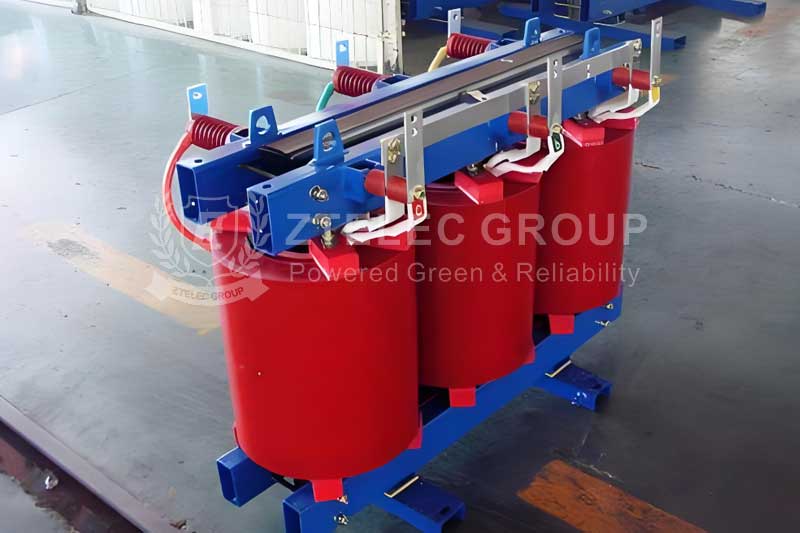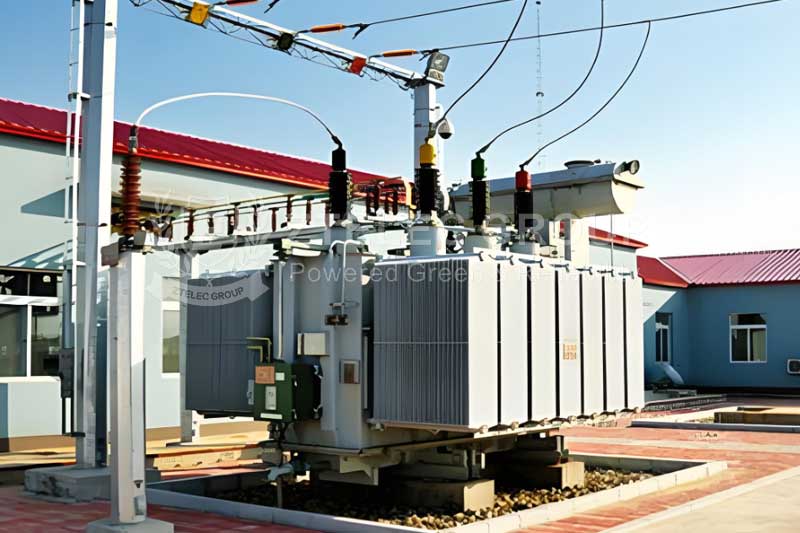Dry-Type vs Liquid Transformers
Differences Between Dry-Type Transformers and Liquid Transformers
Transformers, as essential electrical equipment in power systems, primarily function to convert AC electrical energy from one voltage level to another through the principle of electromagnetic induction. Depending on the type of insulation medium used, transformers can be classified into various types, among which dry-type transformers and liquid transformers are the most common. Although their basic functions are similar, there are significant differences in structure, operating mechanisms, usage environments, and maintenance. This article will explore the differences between dry-type transformers and liquid transformers from multiple dimensions.

Basic Structure and Working Principle
A dry-type transformer refers to a transformer whose insulation materials do not contain liquids and uses air as the cooling medium. The internal windings and core are insulated using impregnated insulation coatings, typically cured with epoxy or polyester resin. This structure allows dry-type transformers to operate in open or well-ventilated environments, providing high safety and reliability.
In contrast, liquid transformers use transformer oil as both the insulation and cooling medium. The windings and core are immersed in transformer oil, which facilitates heat dissipation through its flow, thereby enhancing the transformer’s cooling capacity. Consequently, the design of liquid transformers must consider the sealing of the oil tank and leak prevention measures.
Insulation Performance
The insulation performance of dry-type transformers primarily relies on solid insulation materials, which exhibit good stability in harsh environments such as high temperatures and high humidity. The insulation class of dry-type transformers is generally higher than that of liquid transformers, allowing them to adapt to a wider range of climatic conditions while reducing the risk of fire.
Although liquid transformers also have advantages in insulation performance, as transformer oil can effectively prevent insulation breakdown caused by arcing and short circuits, their insulation performance is typically influenced by the quality of the oil, temperature, and environmental factors. If the transformer oil becomes contaminated or is used for an extended period, it may lead to a decline in insulation performance, increasing the risk of equipment failure.
Heat Dissipation Performance
Heat dissipation performance is an important consideration when selecting a transformer. Dry-type transformers rely on air convection for cooling, resulting in relatively limited cooling effectiveness. Therefore, their applicability is somewhat restricted in high-load and high-temperature environments. To improve cooling, dry-type transformers usually require auxiliary devices such as fans to enhance their cooling efficiency.
Liquid transformers, on the other hand, exhibit good heat dissipation performance, as the circulating transformer oil can effectively carry away heat generated by the windings. In high-power and high-load applications, liquid transformers often demonstrate superior cooling capabilities, making them more suitable for environments with significant electrical loads.

Safety Requirements and Environmental Considerations
Since dry-type transformers do not use harmful liquids, they do not release harmful gases into the environment. Additionally, they do not contain flammable liquids, resulting in a low risk of explosion or fire. Consequently, dry-type transformers are the preferred choice for indoor use due to their reliability.
As a result, they can easily be found in schools, hospitals, and other public facilities.
However, caution is required when handling liquid transformers, as they can easily explode or catch fire. They are also detrimental to the environment and are unsafe for indoor use.
If you must purchase a liquid transformer, consider using silicone or even hydrocarbons, as they are non-toxic.
Maintenance
Due to their air-cooled design, dry-type transformers are easy to maintain. They only require standard visual inspections, depending on your equipment and usage frequency. Furthermore, these transformers have resistance to contamination and dust accumulation.
In contrast, liquid transformers require more maintenance. For example, in addition to checking and tightening connections as with dry-type transformers, the liquid itself must be monitored. You must continuously check the pressure gauges and look for any signs of leakage. Additionally, you may need to collect liquid samples for dissolved gas analysis.
Equipment Size Requirements and Capacity
Compared to liquid transformers, dry-type transformers occupy a larger footprint. However, for air-cooled equipment, a greater electrical clearance is needed to facilitate air circulation. Moreover, the size and rating of dry-type transformers are limited, making them suitable for medium to small voltage requirements.
Liquid transformers have a smaller footprint, but they also occupy a considerable amount of space. Due to the presence of heat exchangers and flanged ends, they may take up more space than dry-type transformers. However, they can handle high voltage capacities.
Dry-type transformers and liquid transformers exhibit significant differences in structure, insulation performance, heat dissipation performance, application scenarios, and maintenance. Dry-type transformers are suitable for low-voltage and high-safety-demand environments due to their ease of maintenance and good safety, while liquid transformers, with their superior heat dissipation performance, are more appropriate for high-voltage and high-power electrical applications. Understanding these differences is crucial for selecting the appropriate type of transformer and enhancing the safety and reliability of power systems.
- more+releated article
- 2026-01-04Common Power Transformer Faults: Causes, Solut
- 2025-12-312026 New Year Holiday Notice
- 2025-12-31Operation, Maintenance, and Service Life Manag
- 2025-12-30How to Select a 100 kVA–500 kVA Distribution
- 2025-12-29The Impact of NHN NMN Composite Insulation on
- 2025-12-26Practical Application of GPO-3 Insulation Boar
- 2025-12-2510kV Transformer Replacement Timeline: Install
- 2025-12-25Low Smoke EN45545 GPO3 UPGM203 Laminated Board
- 2025-12-24Merry Christmas — ZTelecgroup Christmas Cele
- 2025-12-24How to Select a Suitable 50kVA–500kVA Distri





